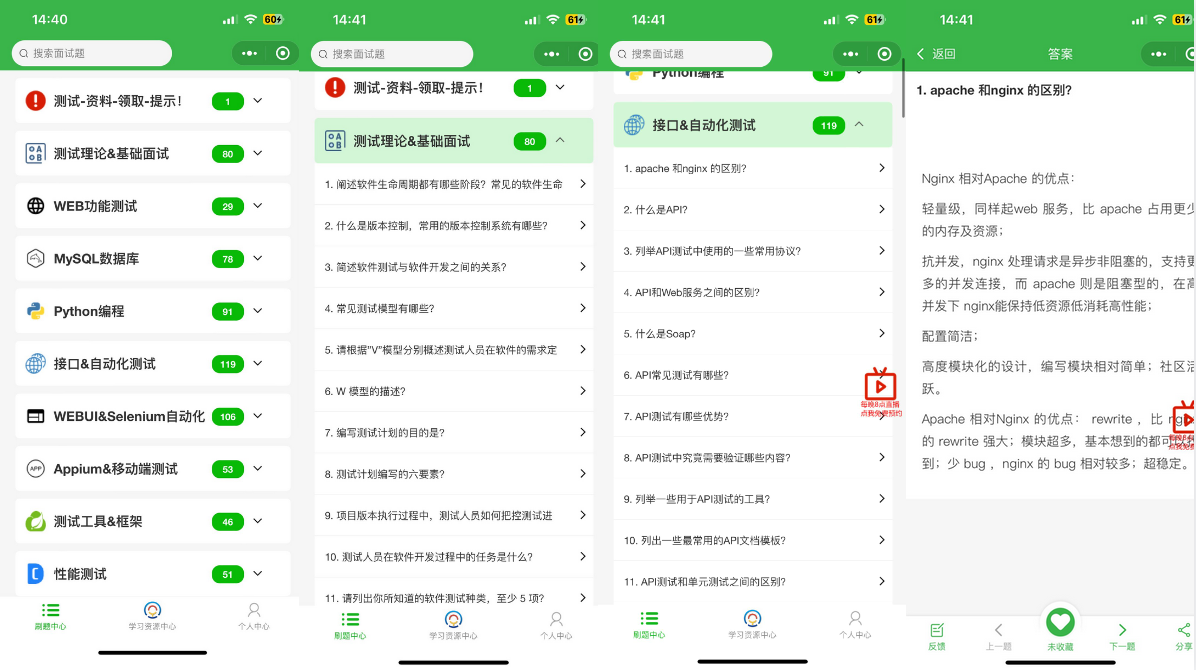Performance testing is a crucial link in the process of software development and application. It is an effective means of evaluating system performance, stability and scalability, and can ensure that software runs efficiently in real environments. In the era of rapid development of modern technology, the importance of performance testing is more and more obvious.
The importance of performance testing in the software development and application process cannot be underestimated. It is a key means to ensure user experience, discover potential problems, and improve system reliability. At the same time, following the best practices of performance testing can ensure the accuracy and reliability of testing, improve testing efficiency, and provide a strong guarantee for software development and applications. Only by paying attention to performance testing and following best practices can we build stable and efficient applications to meet users' constant pursuit and challenges of technology.

Here are some best practices in performance testing for reference.
Set clear performance goals
Before starting performance testing, the first task is to set clear performance goals. These goals should be specific, measurable, and aligned with business needs. For example, you can set a response time threshold, such as each page should not take more than 1 second to load. In addition, you can also set a target for the number of concurrent users to verify the carrying capacity of the system during actual user access. These goals will be the reference for performance testing to ensure that the system is acceptable when meeting these goals.
Usually our goal setting should refer to two important references.
- Current load on the system.
- Expected system load.
One corresponds to the short-term goal, and the other corresponds to the long-term goal of performance testing. In the structural dismantling according to the goals, a mid-to-long-term work roadmap is formulated.
Choose the right performance testing tool
There are many performance testing tools to choose from on the market, such as JMeter, LoadRunner, Gatling, etc. Choosing the right tool depends on system characteristics and testing requirements. Make sure that the selected tool can simulate the behavior of real users, support multiple protocols and various test scenarios. Also, consider the ease of use of the tool and the proficiency of the performance testing team.
For a mature testing team, when these tools cannot meet the needs and are difficult to integrate into large systems that reduce costs and increase efficiency, we will face two paths: 1. Secondary development based on existing tools and open source frameworks; 2. . Fully self-developed framework and platform.
The needs are different, and the choices are also different. No matter which method you choose, you will have higher requirements for testers, especially in terms of language programming ability. The mainstream testing languages are still Java & Python, but Golang and js have already emerged, and the future is still unknown.
现在我也找了很多测试的朋友,做了一个分享技术的交流群,共享了很多我们收集的技术文档和视频教程。
如果你不想再体验自学时找不到资源,没人解答问题,坚持几天便放弃的感受
可以加入我们一起交流。而且还有很多在自动化,性能,安全,测试开发等等方面有一定建树的技术大牛
分享他们的经验,还会分享很多直播讲座和技术沙龙
可以免费学习!划重点!开源的!!!
qq群号:110685036
Write high-quality test scripts
The performance test script is the core of the performance test. Writing high-quality test scripts ensures test accuracy and repeatability. The test script should simulate the behavior of real users, including page browsing, form submission, data uploading, etc. Also, pay attention to the maintainability of the scripts, as the system changes, the test scripts may need to be updated, so keep the code clean and well-structured.
The use of programming languages in performance testing can provide higher flexibility and customization, enabling testers to write their own test logic and algorithms according to actual needs, realize automated testing and adapt to different performance testing scenarios and complex testing requirements. The programming language also allows testers to better handle large amounts of data and test results, and conduct comprehensive analysis, so as to more accurately evaluate the performance of the system and discover performance problems and optimization opportunities.
Use reasonable test data
The selection of test data is very important in performance testing. It is necessary to use real and diverse data to simulate the operation of real users in the system. The size and complexity of the data volume should be in line with the actual situation, so as to better simulate the real scene and find potential performance problems.
Generally speaking, the closer the test data in performance testing is to real users, the better. Under this idea, there are two branches: the real data of some users on the simulated disk and the real data of some simulated users. If you want to make long-term planning, you can consider these two directions at the same time. After all, different routes lead to the same goal. According to experience, most of them cannot be aligned with the actual online configuration at the hardware level. How to correlate or convert the performance test results of the test environment with the online is also an important ability of performance test engineers.
run a long test
Long-duration load testing is critical to the reliability and stability of software and systems. Through long-term load testing, we can simulate continuous high-load conditions in the real world and test the performance of the system under long-term operation. This helps to spot potential performance issues and resource leaks, and to verify that the system is running stably and efficiently under sustained high stress. The long-time load test is also helpful to evaluate the elasticity and scalability of the system, determine whether there will be problems in the long-term operation, and provide an important reference for system optimization and adjustment.
regular performance testing
Regular performance testing is essential for continuous optimization and stable operation of software and systems. With the continuous evolution of software applications and the expansion of user scale, the performance and reliability of the system may be challenged. Regular performance testing can help businesses and teams maintain system efficiency and stability throughout the software life cycle.
Regular performance testing can detect and solve potential problems in a timely manner. Over time, software applications may be affected by the addition of new features, growth in data volumes, and increased user access. These changes may result in system performance degradation or potential performance bottlenecks. Through regular performance testing, we can discover these problems in time, make adjustments and optimizations in advance, and ensure that the system remains efficient and stable in long-term operation.
Periodic performance testing helps evaluate system scalability and reliability. With the expansion of user scale and business growth, the load and pressure faced by the system will also increase. Through regular performance testing, we can simulate system performance under different load conditions and evaluate system scalability and reliability. This helps ensure that the system can handle larger user and data demands in the future.
Regular performance testing helps to continuously optimize system performance. During regular performance testing, we can identify opportunities for performance improvement by comparing the performance data of different versions. The results of regular performance testing can help the development team determine which parts need to be optimized and adjusted, so as to continuously improve the performance of the system.
Regular performance testing is essential to keep software and systems efficient and stable. It can detect and solve potential problems in time, evaluate system scalability and reliability, and continuously optimize system performance. Through regular performance testing, we can ensure that the system remains efficient, stable and reliable in the long-term operation, providing users with a high-quality experience.
The following are supporting learning materials. For friends who do [software testing], it should be the most comprehensive and complete preparation warehouse. This warehouse also accompanied me through the most difficult journey. I hope it can help you too!

Software testing interview applet
The software test question bank maxed out by millions of people! ! ! Who is who knows! ! ! The most comprehensive quiz mini program on the whole network, you can use your mobile phone to do the quizzes, on the subway or on the bus, roll it up!
The following interview question sections are covered:
1. Basic theory of software testing, 2. web, app, interface function testing, 3. network, 4. database, 5. linux
6. web, app, interface automation, 7. performance testing, 8. programming basics, 9. hr interview questions, 10. open test questions, 11. security testing, 12. computer basics

Information acquisition method:
